Three tour starts on the 1st of May
We have three of our partner tours arriving on the 1st of May! This is the offical start of a very busy Spring (following our tour cancellations because of the volcano activities). Birds are abundant and most of the late arriving birds also returned from the wintering grounds. Even Corncrake, Aquatic Warbler, Marsh Warbler and Red-breasted Flycatcher is allready here.
The Hortobágy area is very wet this year and hence we are looking forward to a superb year for breeding marshterns. Already thousands of White-winged Black Terns looking for suitable breeding area.
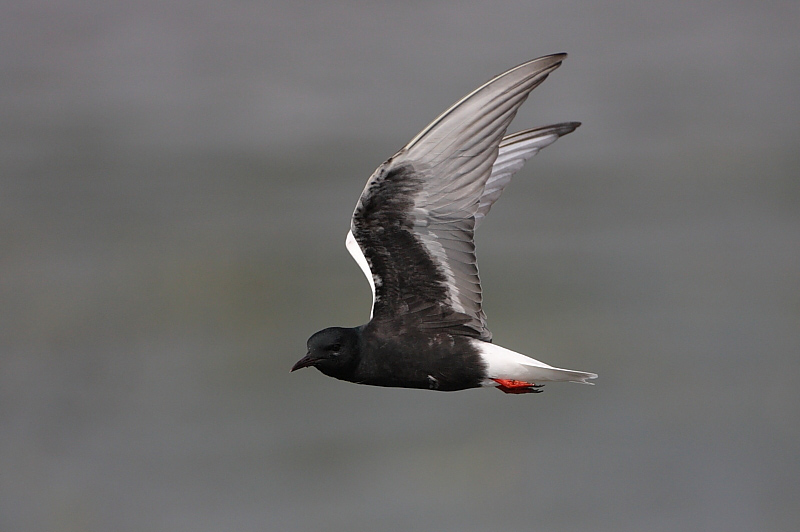
White-winged Black Tern in the Hortobágy (2010) Photo: János Oláh
Hide Photography season is well under its way as well and not only two pairs of Red-footed Falcons occupying nest boxes close to our hide but most other hides also brilliant! The waterbird hides are great with up to 6 species of ducks are being photographed there daily!
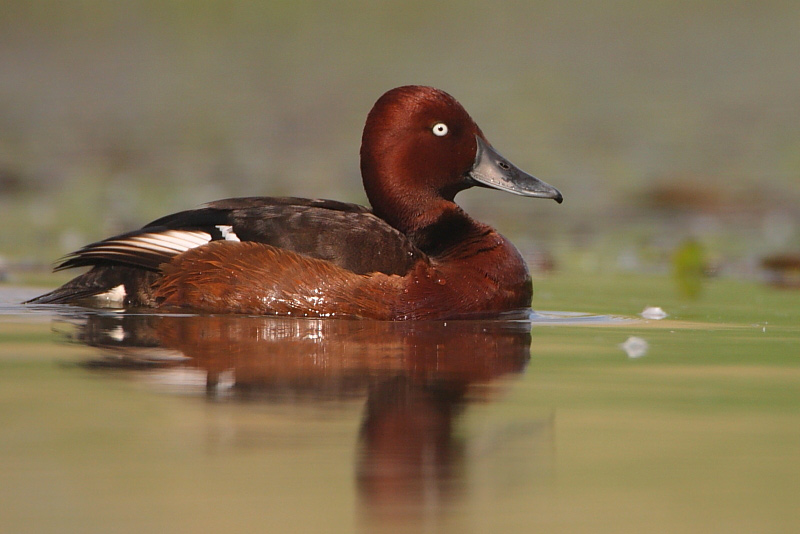
Ferruginous Duck in front of the PygmyCormorant hide Photo: János Oláh
In the Passerine hide despite the rainy weather up to 24 species has been seen daily in the last days.
Hope to see you in Eastern Europe soon!
Sakertour team
Subalpine Warbler in Hungary!
A Subalpine Warbler was caught at Hódmezővásárhely in southern Hungary. This is the second ever observation of the species in Hungary!
This superb bird was caught by Borbáth Erna on the 17th of April so our great thanks goes to her!!!
A few images of the bird:
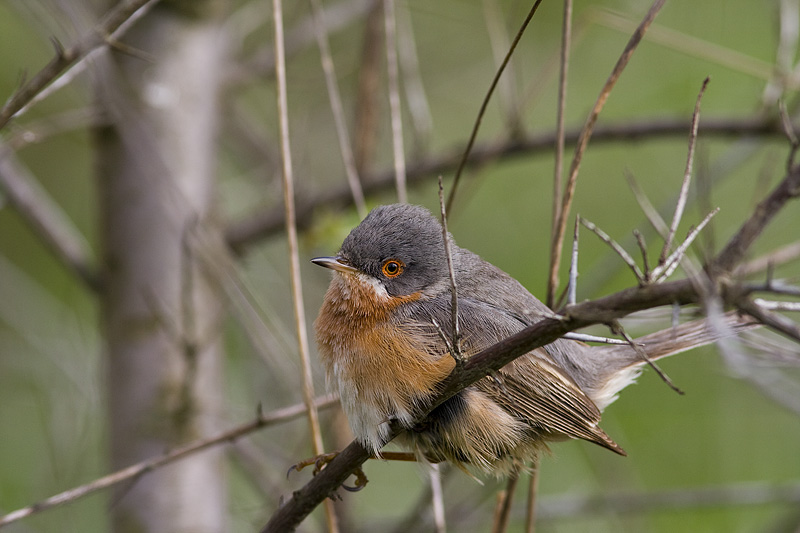
Subalpine Warbler after the realase Photo: Attila Szilágyi
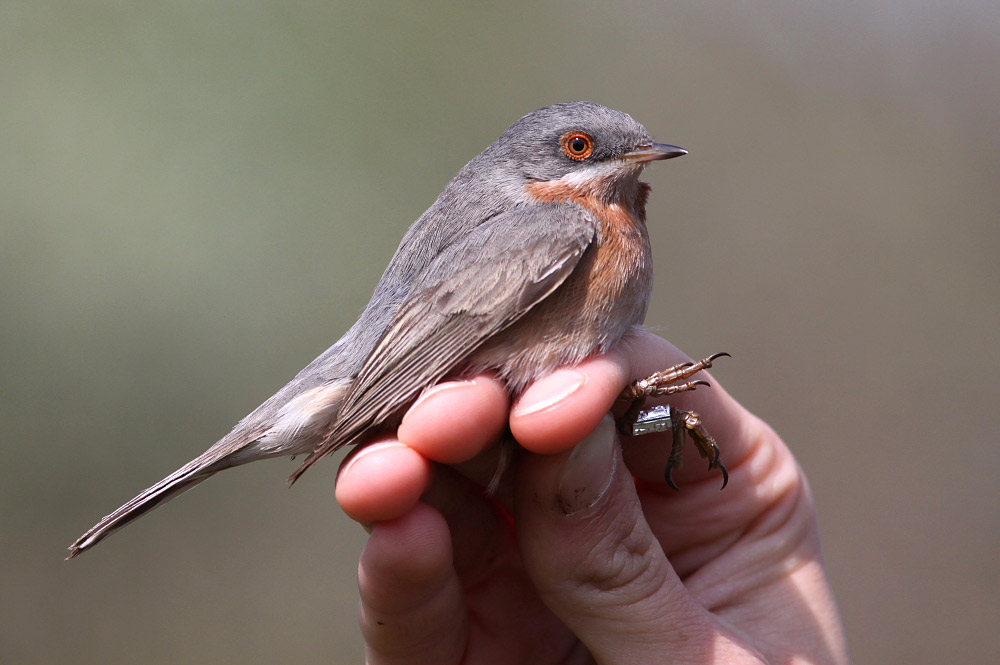
Subalpine Warbler in the hand Photo: János Oláh
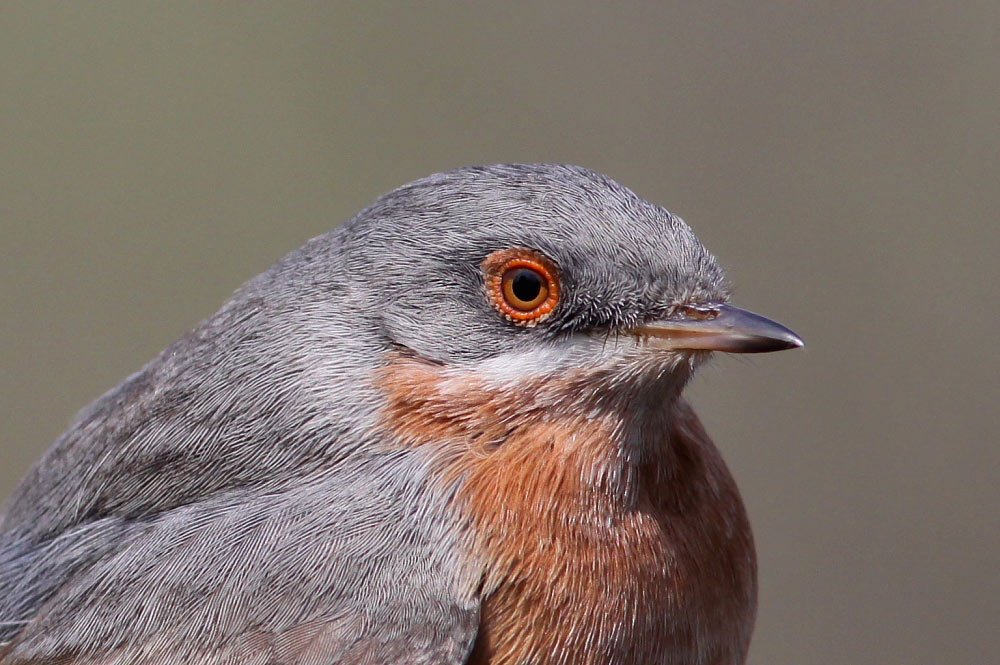
Subalpine Warbler in the hand Photo: János Oláh
Sakertour team
Owls and woodpeckers tour postponed
Our tour with Island Ventures was unable to come because of the Iceland volcanic activities!
Lets hope this event will not carry on throughout the Spring.
Check out the itinerary here and there could be one or two spare spaces left for 2011!
Sakertour team
Early Spring in the Carpathian Mountains
In the second half of April some of our guides spent a weekend in the Carpathian Mountains. The weather was nice although there were still 80cm of snow and the night temperature was down to -9C. We stayed in a so called ´lekking house´ close to a Capercaillie display area. We managed to see up to 8 Capercaillies.
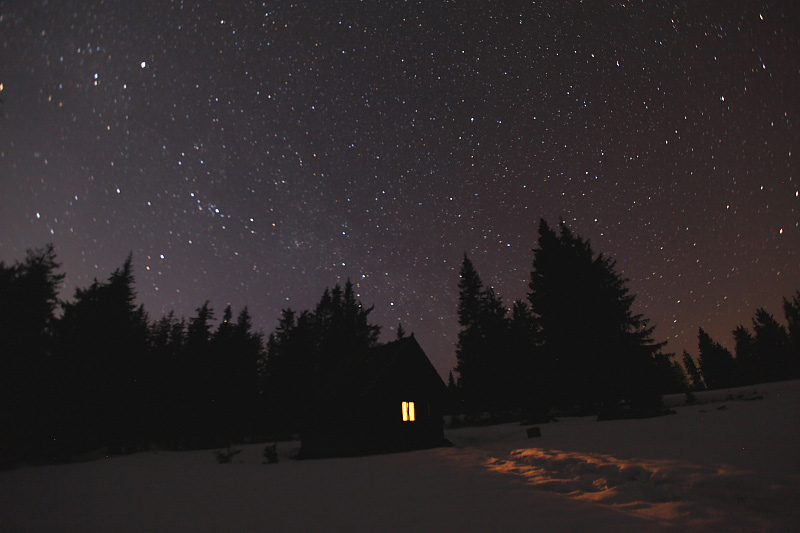
The ´lekking house´ at night Photo: János Oláh
Surprisingly some Ring Ouzels were already in the breeding elevation though large number of migrants were seen on the lower pastures. Crossbills were busily feeding youngs and Three-toed Woodpeckers were starting to drumm.
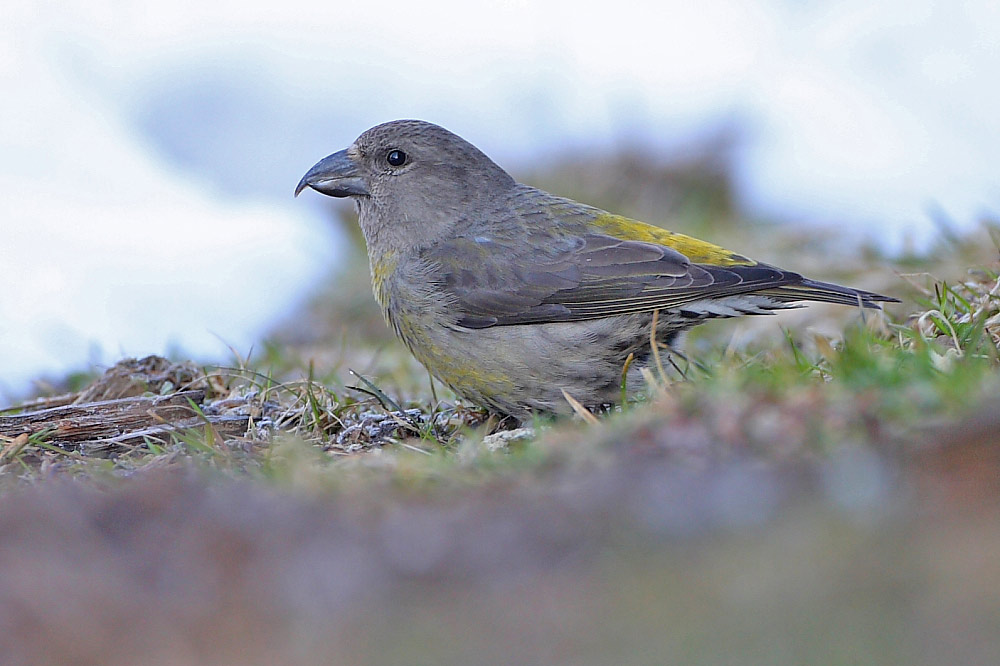
Female Crossbill Photo: János Oláh
For more images please check out our Transylvania blog here.
Sakertour team
Owl nest-boxing 2010 II.
For the second time this year we were disposing owl nest-boxes. This time Tengmalm´ Owl boxes were distributed in Slovakia.
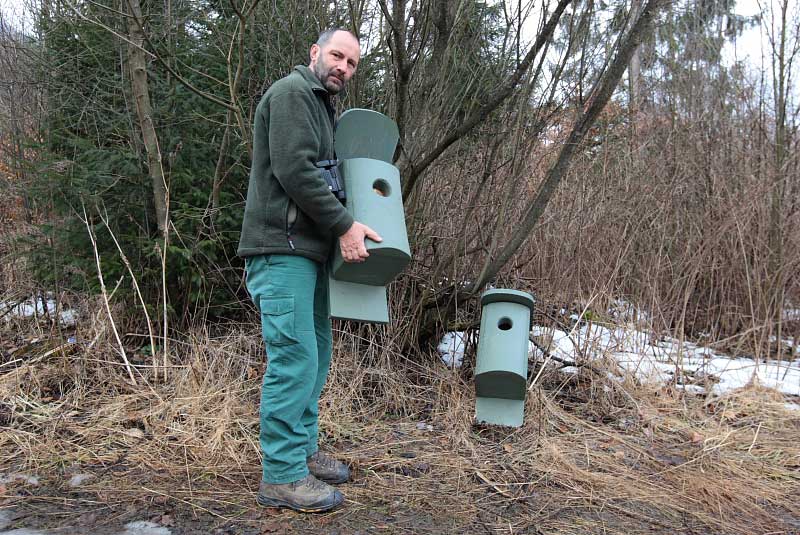
Tengmalm´s Owl boxes with Zoltán Photo: János Oláh
The Sakertour nest box scheme supplies new breeding boxes for owls every year. This year we have constructed 25 Ural Owl nest boxes and 10 Tengmalm´s Owl nest boxes.
The scheme helps us to show our tour participants these secretive birds with a higher success rate then any other company in the Carpathian region!
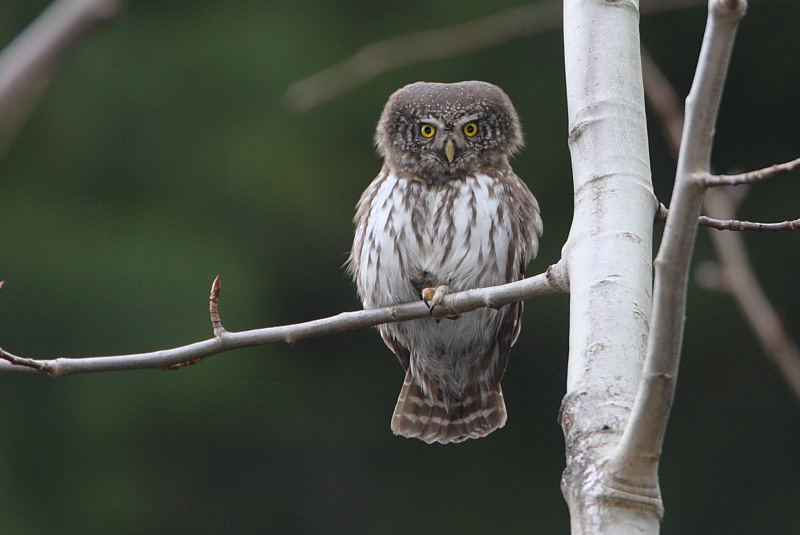
Eurasian Pygmy Owl Photo: János Oláh
During this nest-boxing weekend we encountered several species and individuals during both daytime and at dusk. One of the Eurasian Pygmy Owls was posing superbly for us. The best encounter was seeing Ural Owl, Eurasian Pygmy Owl and Tengmalm´s Owl from the very same spot (virtually not moving our feet) and also heard a fourth species (Tawny Owl) there.
Other highlights of the weekend were several Hazel Grouses and four White-backed Woodpeckers.
Sakertour team
Limosa Goose weekend 2010
The participants on this action packed weekend enjoyed a fantastic time! Just as we were hoping when we designed this tour, it coincided with the peak of the spring goose migration in the Hortobágy National Park. Although following the largest ever Red-breasted Goose migration in the autumn of 2009, unfortunately the spring passage was rather poor. Nevertheless the aim of this weekend was still achieved as we saw several Red-breasted and (more importantly) Lesser White-fronted Geese on the tour.
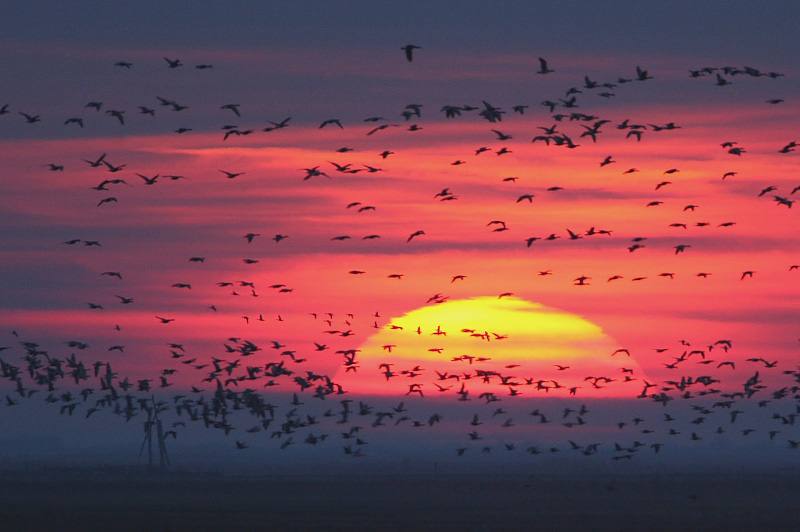
Sunset with geese Photo: János Oláh
Other highlights included a lovely pair of Sakers, up to 22 male Great Bustards in full breeding dress and a selection woodpeckers including Black, Middle-Spotted and Syrian. White-tailed Eagles were also a feature of the weekend with up 25 in a day with 14 in the same thermal.
Despite the cold weather we had a splendid tour and we hope to repeat it next March!
Sakertour team
Owl nest-boxing 2010
The Sakertour nest box scheme supplies new breeding boxes for owls every year. This year we have constructed 25 Ural Owl nest boxes (weighing about 8kg each) and placed them both in Transylvania and the Zemplén Hills. One of the specialities of our team is that everyone is involved in nature conservation and over the years we have put up hundreds of owl nestboxes for several species.
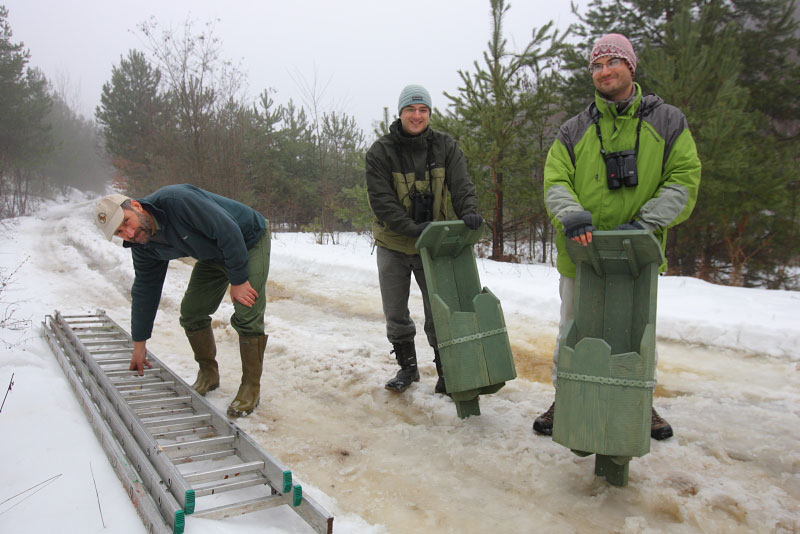
Zoltán, Attila and Gábor (from left to right) in preparation Photo: János Oláh
The scheme helps us to show our tour participants these secretive birds with a higher success rate then any other company in the Carpathian region. We plan to put up a few boxes for Tengmalm´s Owl as well, later this spring.
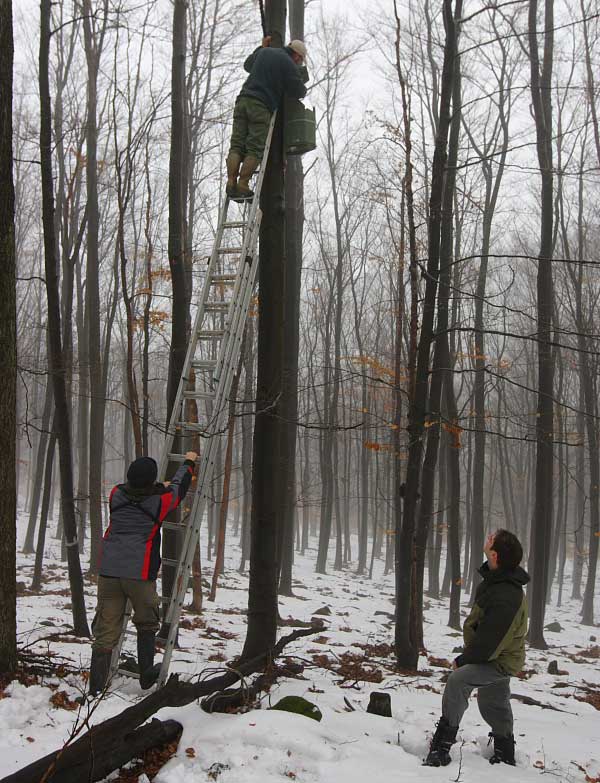
János, Zoltán and Attila (from left to right) puting up a nest box Photo: János Oláh
Sakertour team
New eagle record at the eagle hides!
Today we had 14 different White-tailed Eagles in front of ´eagle hide II´ – a record number! The previous highest count was 12 at one time. The Hortobágy National Park now begins to stir from its long winter ‘sleep’ and more and more eagles arrive daily, following the hordes of grey geese returning to these vast pannonian lowlands. Eagle activity is likely to be very good during the coming weeks. A slight concern is the rapid thawing of a substantial snowfall, which might cause a few places to become inaccassible.
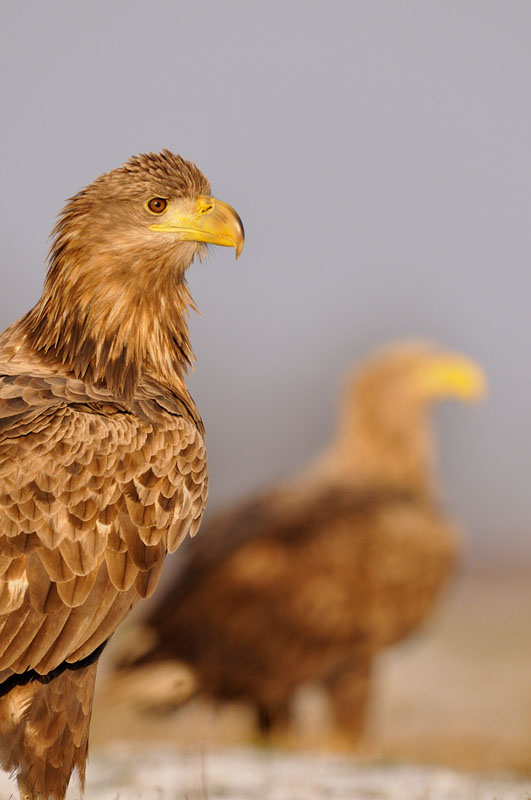
White-tailed Eagles Photo: Christian König
Sakertour Team
Hungarian National Eagle Count 2010
The Hungarian Ornithological Society (MME) – http://www.mme.hu/ – made the 7th Hungarian Eagle count in January. During this event over 245 observers counted wintering eagles all over Hungary. The most common eagle was White-tailed Eagle with 443-451 individuals and about 60 of these were in the Hortobágy region! Second most common was the Eastern Imperial Eagle with 125-127 individuals seen, followed by two Golden Eagles and a Greater Spotted Eagle.
The activity around the Sakertour eagle hides in the Hortobágy National Park is still good with White-tailed Eagles our daily guests.
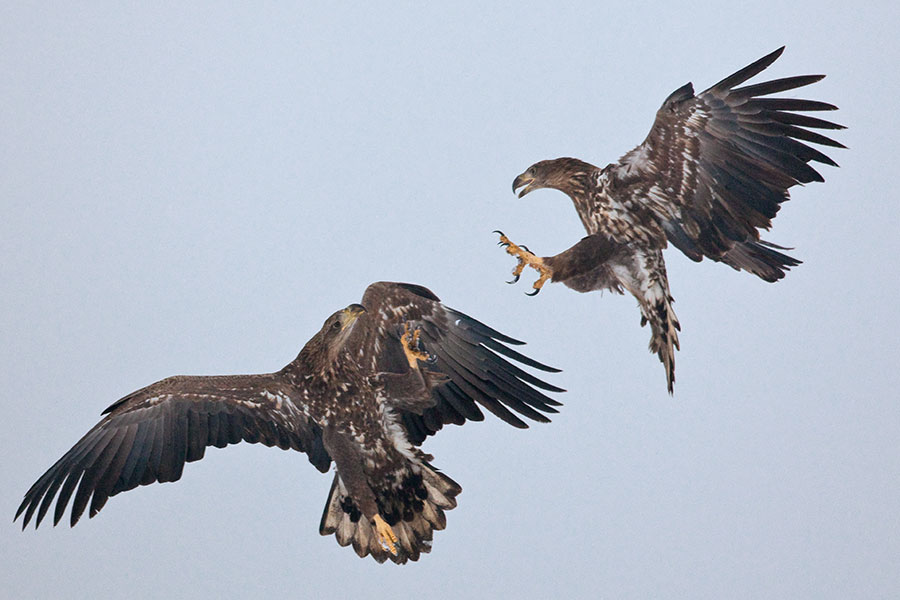
White-tailed Eagles fighting Photo: János Perényi
Sakertour team
Mid-winter bird count on the Carpathian lower Danube 2010
We made the annual midwinter waterbird count on the lower (Carpathian Basin section) of the River Danube from Orsova to Bazias. This c.130 kilometer stretch of Danube usually holds 25,000-30,000 waterbirds in winter. Numbers also depend on ice cover of the upper Danube sections (mainly in Hungary) as well as the weather generally.
This year the count was 24,632 waterbirds, of which the outstanding result was the record number of Pygmy Cormorants. We counted a total 3,766 birds at their roost, which also represents the biggest ever flock of this species in the Carpathian Basin and the grand total for this species was 3988.
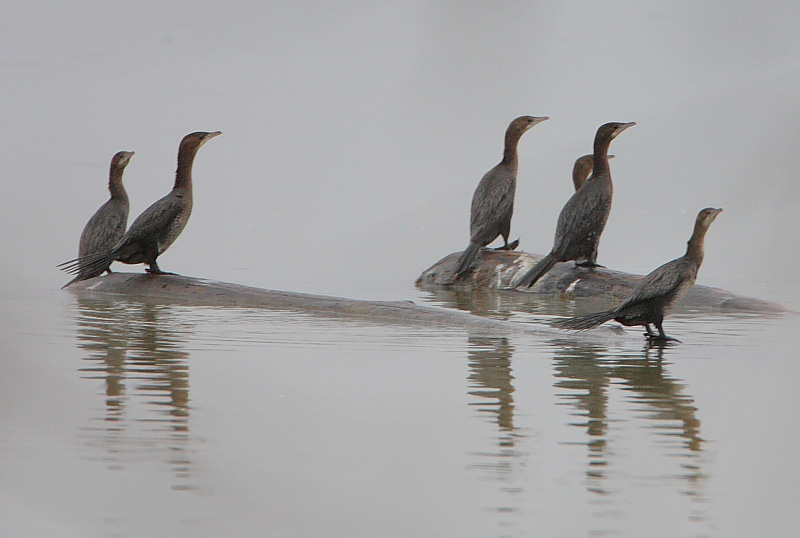
Pygmy Cormorants along the Danube Photo: János Oláh
Other highlights included 15 divers, 10 Scaup, 9 Velvet Scoters, 8 Red-breasted Mergansers, 887 Smews and several Sombre Tits. The latter is a rare and restricted breeding bird in the Carpathian Basin. The mammal highlight was a superb lynx in the Bihar mountains on our drive to the Danube near the village of Halmágygórós (Grosi).
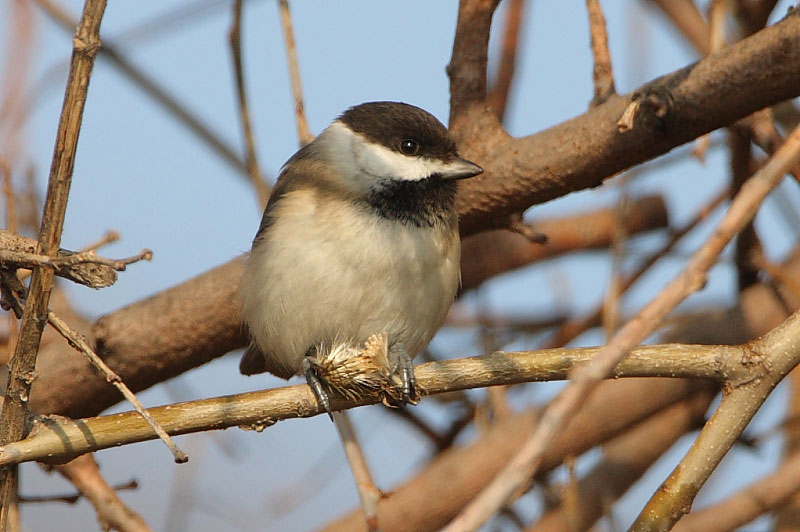
Sombre Tit Photo: János Oláh
Sakertour team

